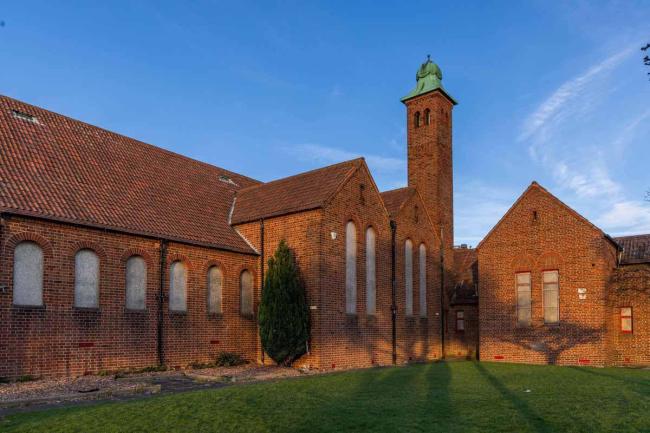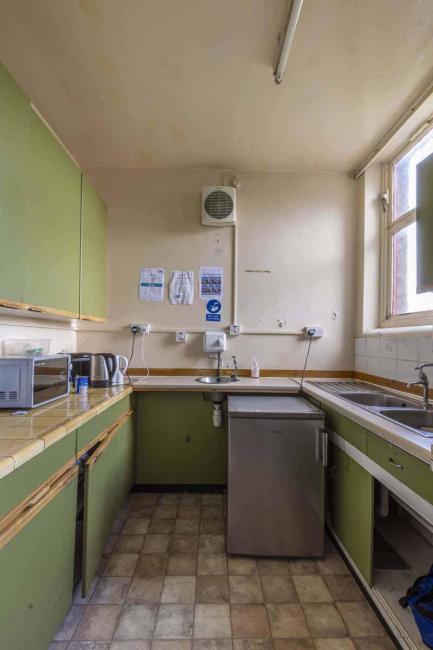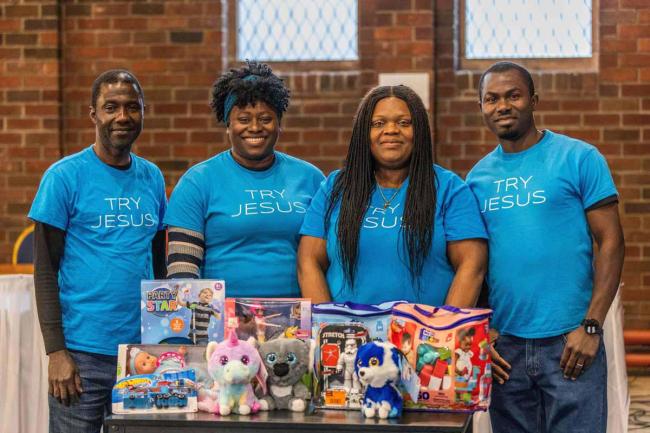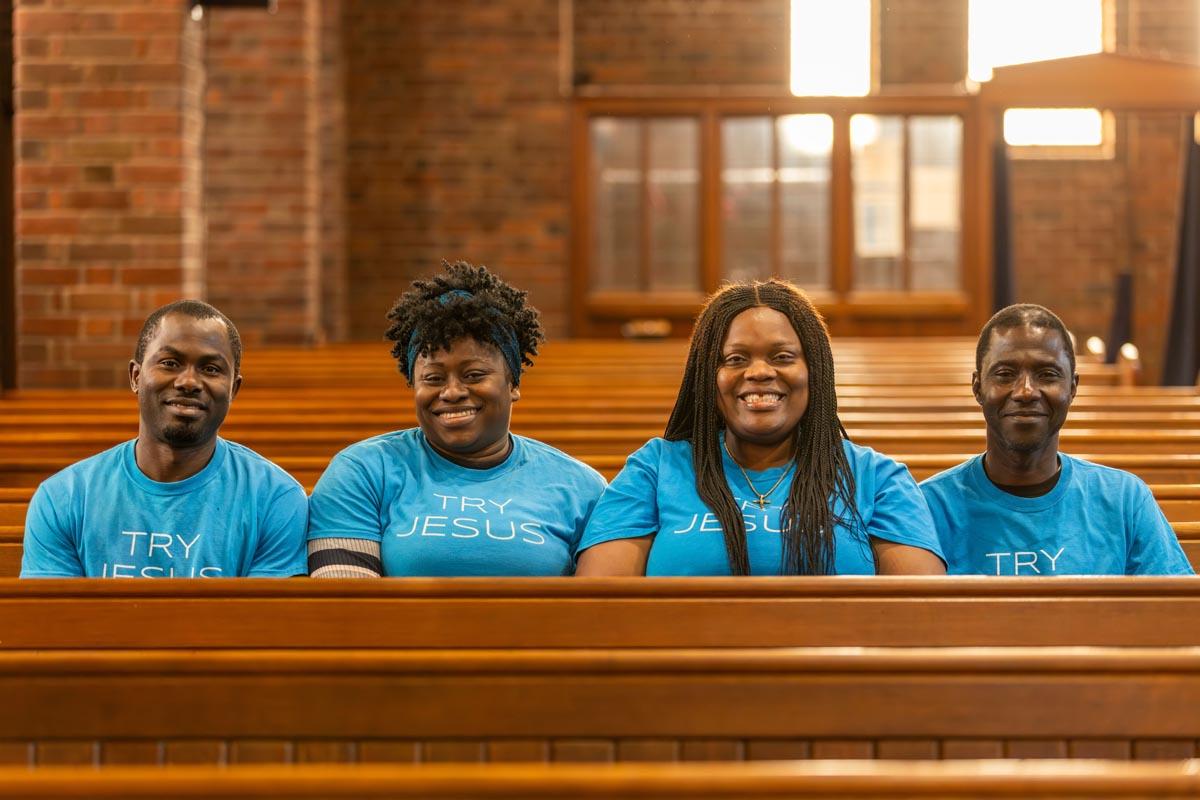A Redeemed Christian Church of God (RCCG) church in Scotland had a problem. Thankfully, it was one most church leaders love to have. Their congregation kept growing and they couldn’t keep pace with the rooms they were hiring. This is how the church went from renting small halls to buying an abandoned church – and the difference it has made in the community.
Bigger congregation, bigger dreams
“There's a scout camp venue [that our church was based in] and the place was actually too small, and we moved... and then it becomes too small for us because we're increasing almost every week,” shares Rufai, minister at RCCG Church.
"And then we got an information that there is a Church of Scotland [church] called St Christopher Church [that was on the market].”
The church building, a beautiful C-Listed church in Craigentinny – a suburb of Edinburgh – was owned by the Church of Scotland, but it had been closed and locked up for two years.
RCCG Church didn’t buy the building outright. Instead, they have taken out a mortgage on the property. They put in a bid for the building and then raised the money needed for a deposit – a huge sum for the church – through the generosity of the congregation and by reaching out to local and international connections. Meanwhile, they managed to negotiate with the Church of Scotland for more time to enable them to secure the deposit.
The church began negotiations in 2017 and managed to move into their building in 2018. And after moving into the abandoned church building, there came a welcome surprise for them.

A space for everyone
“Many people thought this church had been closed because the church had been shut down for two years,” says Rufai. “When we came in, we saw the local people – people that attended this church before! People were excited that the church is open again,” shares Rufai.
And the church was ready to welcome them and anyone in the community that wanted to come along.
“We find that in the community there are a lot of people that are isolated, based on their circumstances. So, the bigger picture is to see people coming together. [For example], we see a lot of people coming here that are depressed,” explains Rufai.
“One of our top priorities is to bring people to achieve their potential and see that they actually can start a new beginning – a new life for themselves. Another, is to first and foremost create an atmosphere in a room where people can first and foremost feel welcome... comfortable to share their concerns and also to see how we can help.”
Getting started
In the last few years, the church has had an amazing presence in the local community. The church is open every day – outside of services – as it hosts and runs a number of community groups. This includes including kickboxing, music classes and dancing groups.
The church also provides a food parcel service, winter jacket support project, free school uniforms, fuel support plan and emotional support and counselling for vulnerable people and families in the community.
But the building is almost a century old. And the kitchen and toilets are no longer fit for purpose – they are limiting what the church can do.

After, receiving £5,000 through our small grants programme to make urgent roof and floor repairs in the church, RCCG began to focus on developing this building to fit the needs of the congregation and the community. This meant turning their attention towards the now inadequate facilities. At the end of 2023, the church was awarded a grant of £9,965 from the National Churches Trust to help pay for a new kitchen and to expand the toilets.
It doesn’t stop there
As soon as the church has modern facilities, the life of the church will be further transformed.
Once the kitchen meets the necessary food, safety and hygiene standards, the church has big plans to better support the local community – including reopening the food bank it runs.
“During the winter, we to normally do something we call ‘care for the homeless’ by cooking food and we take it to the street. And then also there are a few people that actually come here from war zones – they [have] just relocated to the community. We get to [know] many of them; we want to cook for them," says Rufai.
And it doesn’t stop there. The church is planning a cookery school – there are at least four chefs in the congregation that are ready to help teach people how to cook and train up volunteers to help teach others. They are also looking to set up English and IT classes to, in order to help people find jobs.
The church currently only has two individual toilets – even though on a Sunday there can be between 200-300 people using the building! Expanding them will make the church space even more welcoming, especially to the mother and toddler groups and help with a nursery that the church wants to set up to support single parents in the area.

When a plan comes together
Managing a building – especially an older building – is tough. There is ongoing maintenance that is needed to keep the building watertight and in good condition. But by following a phased approach to adapting the building to their needs, RCCG has developed a sustainable way they can care for their church for years to come.
And National Churches Trust – through our new support officer, Karen Hind – who is funded through Cherish by the National Lottery Heritage Fund and is based in Scotland, has been able to support them. From advice on writing grant applications, signposting to new funders, help on how to care for listed buildings and ideas on how to get volunteers involved with looking after the building, we are on hand to help RCCG, and other churches, on their journey.
And we are also here as well for you and your church, chapel and meeting house.
Our team has officers based locally in Scotland, Wales/Cymru, Northern Ireland, North West England (Lancashire, Cumbria and Greater Manchester), as well as officers who cover requests from across the UK.
For Churches: top tips for your place of worship
-
Consider buildings already in your community. If your congregation is expanding or you’re developing a new site for worship, do not rule out existing church buildings, as they may be ideal for your needs – and bring with it people who are looking for somewhere to worship. You can find churches that are seeking new users here for Scotland and here for England
-
Get to know the building you will be taking on. It’s important to know as much about the building as possible, so you will have a better idea of what you would be taking on and any immediate or long-term costs. Community Ownership Support Service, Heritage Trust Network and Historic Churches Scotland have developed a brilliant step-by-step guide on everything you need to know from looking to a building to developing a plan.
-
Get your congregation and community on board early – and keep them involved in caring for the building. Approaching people for help with raising funds means they may be invested in your church for years to come. Holding fundraising events helps foster relationships and a sense of community. So, continue to keep them updated and involved. And look for ways, once your congregation has moved into the church, for them to volunteer and help with the upkeep of the building. This could involve organising a regular ‘workers party’, where a day is set aside each month for people to drop-in and tidy the garden, clean gutters, dust and anything else that is needed.
-
Plan out stages of your building project – do not attempt it all in one go. We recommend you tender for and appoint a lead professional, such as an architect or surveyor, with conservation accreditation if your building is listed, to work with. They will help advise you to focus on what’s most important for your church at the moment and plan timelines in which you can carry out other necessary work. It could be more manageable to carry out smaller repairs in phases than one large project, and it could be easier to secure funding too. Why not check out our handy guide on developing your church building project?

